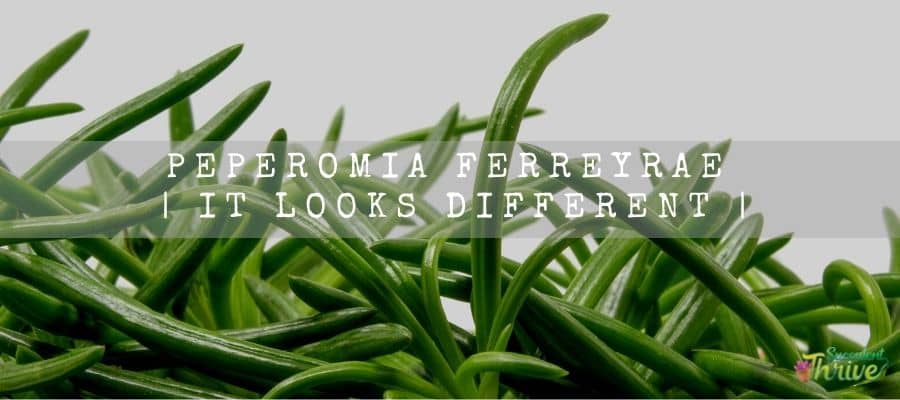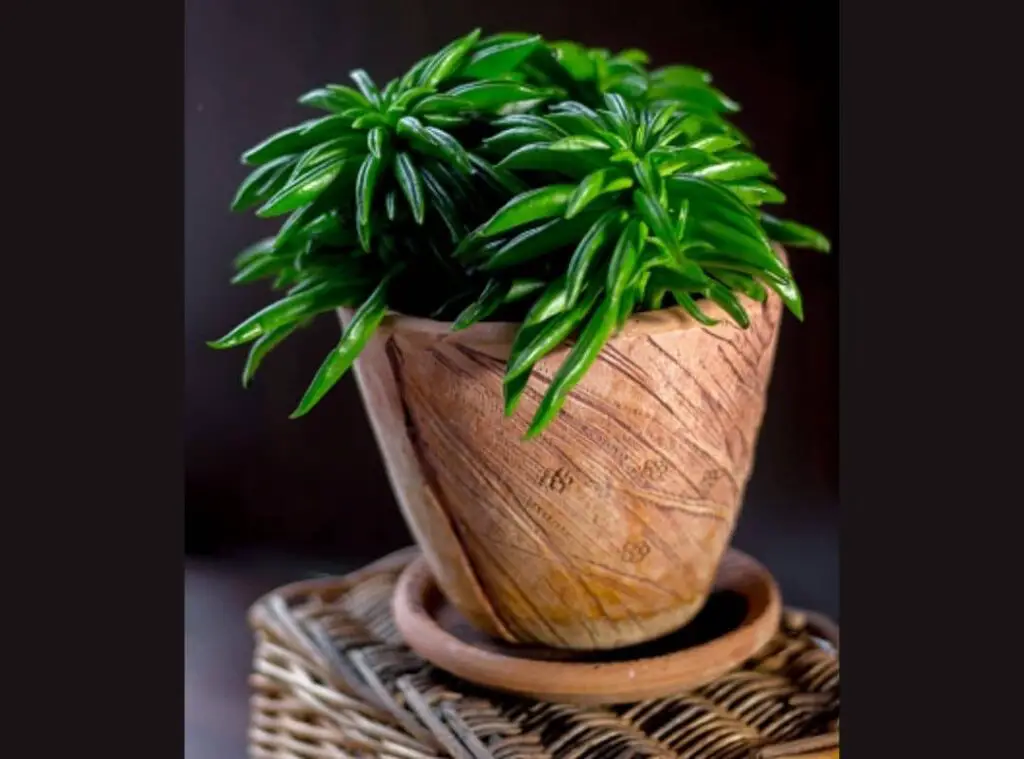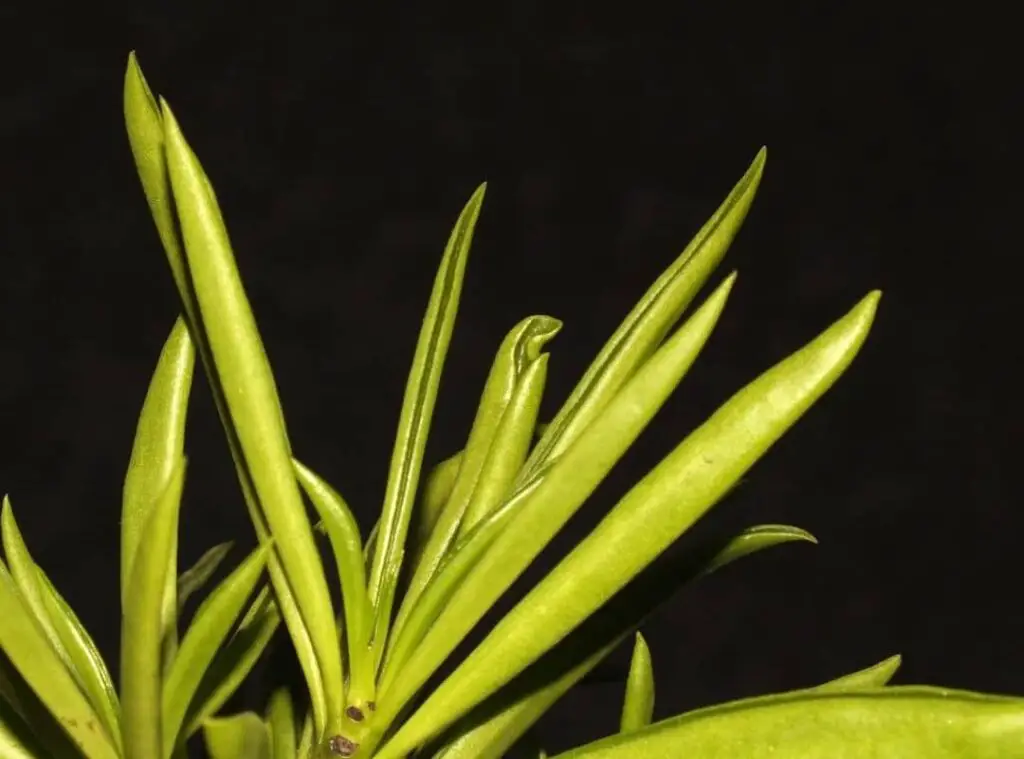Peperomia ferreyrae have gained popularity among the succulent growers as one of the most spectacular plants. In terms of the origin of the plants, you may come across these plants mainly in tropical forests.

Happy bean, Pincushion peperomia is what natives call these plants in general. Peperomia ferreyrae plants are endemic plants to Peru, South America.
Besides, they would like to grow in 1500m-2020m elevations. Furthermore, Peperomia ferreyrae are perennial plants which belong to the family Piperaceae.
If you are a fresher into succulent gardening, I suggest beginning gardening with Peperomia ferreyrae as they require only minimal maintenance and supervision from you.
That said, they would still thrive to their best potential and flourish as beautiful and healthy plants for extended periods.
They would further be handy as great wonderful gift items to share among the friends as well. The ability to thrive in a wide array of light is also another special characteristic of these wonderful Peperomia ferreyrae plants.
So, let’s begin to explore the Peperomia ferreyrae plants, the way you should look after them, the issues the plants could experience and the modes of the propagation as well.
How do I identify Peperomia ferreyrae?
Peperomia ferreyrae are tiny plants as explained in the above. They would rise up to a maximum height of 12 inches when they mature.
These eye-catching plants emerge with flowers in yellow and those flowers in form in clusters. Those flowers are small and would further intensify the overall beauty of the plants.
Having said that, the most significant factor when it comes to identifying these plants is their unique foliage.
The bean shaped leaves are the highlight of these plants. These plants look in contrast with the other fellow succulents in the peperomia family.
Peperomia ferreyrae leaves form in an erecting manner. Further , you could spot the leaves in lime green color which will make the plants look fresh and spectacular.
In terms of the sizes of the leaves, they would reach a maximum length of 7.5 cm. Not only that but also, you could spot a darker green line running through the middle of the leaves as well.
Further those leaves would tend to take a slender or a narrow shape. The leaves would form along the thick stems.
Moreover, the plants would reach a height of 6-8” tall (15-20 cm) and a width of 4-10” (10-25 cm) at maturity. when they grow to their best potential.
Growth rate
Peperomia ferreyrae are growing at a moderate pace.
One look care guide
| Botanical Name | Peperomia ferreyrae |
| Common Name | Happy bean, Pincushion peperomia |
| Plant Type | Semi succulent |
| Mature Size | 12 inches at maturity. |
| Sun Exposure | Bright indirect sunlight |
| Soil Type | Well draining |
| Soil pH | Neutral to acidic |
| Bloom Time | Autumn / summer |
| Flower Color | Yellow |
| Hardiness Zones | The conditions in Zone 6, Zone 7, Zone 8, Zone |
| Native Area | Peru, South America |
| Toxicity | Non toxic |
| Average price | 5 USD |

How do you take care of Peperomia ferreyrae?
Light Requirement
Peperomia ferreyrae are special plants as stated in the beginning of the article. They can grow well in areas where they can gain partial sunlight.
The ability to flourish in low lighting areas make them a great addition for indoor gardening. These are not the type of plants which would tolerate direct sunlight.
Do not expose them to direct sunlight for prolonged periods as it would result in adverse impacts on the growth of the plants especially in summer.
So, what I recommend you do is to shift the plants to a shady spot where they will be protected from intense sunlight during the peak hours in summer.
Having said that, the exposure for extremely low lighting could also badly impact on the plants. Ideally, they would prefer to have a spot where they can gain indirect partial sunlight right throughout the year.
To sum up, if you have a spot in your verandah where there will be exposure for indirect bright sunlight, that would be the best place to grow the Peperomia ferreyrae plants.
Temperature and humidity
A temperature range between 65° – 75° degrees Fahrenheit (18° – 24° C). would fit perfectly with these plants.
In addition to that, it is noteworthy to mention that they will not withstand colder temperatures below 50 degrees Fahrenheit ( 10 degrees Celsius). So, warmer temperatures are a must to ascertain a vigorous and healthy growth of these plants.
So, if the nighttime temperature drops drastically, what you could ideally do is shift the plants indoors.
Furthermore, I don’t recommend placing the plants near radiators or vents as if you place them closer to these, chances are that the plants will be subjected to drastic fluctuation in temperature.
On the other hand, if you keep the plants closer to cold drafts, it will result in leaf drops in the plants which would ultimately result in the drying out of the plants faster.
In addition to warmer temperatures, Peperomia ferreyrae require average humidity levels as well. A humidity level of 40 % – 50 % would work well with these plants.
If you think the air around the plants are sort of dry, you could consider misting them. That said, Peperomia ferreyrae can perform well in humidity levels at room temperature.
Ideally you may place a pebble tray filled with water under the plants so that it would help the plants to thrive well.
The purpose of doing that is to enhance the humidity level during the hottest summer times. Further you may also consider grouping several plants together which would consequently increase the humidity level. On the other hand, if you wish to control the humidity level, you can consider placing a humidifier there.
Is it cold hardy?
Peperomia ferreyrae are not frost hardy plants. To elaborate further on this, they would not withstand temperatures which get colder than 50 degrees Fahrenheit ( 10 degrees) Celsius.
The exposure for much colder situations would make them suffer from frost damage.
Growth Zone
The conditions in USDA Hardiness Zone 6, Zone 7, Zone 8, Zone 9 would be ideal for the Peperomia ferreyrae to grow well.
Watering Requirement
Watering the Peperomia ferreyrae properly is the most crucial yet the most challenging thing to do when growing them.
Having said that, they have the same typical watering needs just like the rest of other succulents and cacti. The purpose of watering the plants should be to moisten the soil.
When you do this, you need to be extra careful to not to supply water in excess as they are highly vulnerable for over watering.
Peperomia ferreyrae are semi succulents which literally mean they conserve water in the surfaces of their leaves.
So, before watering you need to thoroughly explore whether the top layer of the soil is dry to the touch. In terms of the frequency, you could water them once every week.
What you need to make sure is a consistent watering when they are at their active growing pace. Once you complete watering ensure that excess water is moving out from the pots.
Furthermore, in addition to over watering, under watering would also badly impact on the plants. in fact, it would result in wilting in the plants.
Having said that, over watering would result in rot in the plants. You need to ensure that you don’t provide water in excess, especially in winter as it would turn out to be lethal on the plants.
If you are unsure whether you need to water them or not, what you could always do is to wait for a couple of days and then go ahead with watering.
If your plants are lacking water you could see how their leaves tend to take a shriveled look. On the other hand, if you have over-watered the plants , they would tend to take a swollen look.

Soil Requirement Type / pH.
I suggest you go ahead with a fast draining soil mix to grow the Peperomia ferreyrae plants. Furthermore it should be well aerating as well.
Further they would prefer to grow in a neutral to acidic ph. levels. A peat moss mixed soil mix or a cactus soil mix would be ideal to grow these plants.
Waterlogged soggy conditions would be harmful for these plants. If you accidently expose them to such conditions it would result in rot.
If you wish to make an appropriate soil mix to grow the Peperomia ferreyrae, you could mix 2 parts of pat into one part of perlite or sand.
The purpose of adding these two elements is to fasten the draining and to increase the aeration as well. Do not use the regular soil mix solely to grow these plants as your precious Peperomia ferreyrae won’t be able to survive in those conditions.
Pot size Potting and Repotting’
I suggest using a high porous pot to grow the Peperomia ferreyrae plants. If your pot has a high porosity, it would ensure that excess water is evaporating faster without retaining within the pot.
In addition to that, it needs to have one or two draining holes as well.
On the other hand, when it comes to repotting, you could consider repotting them if they have outgrown the pots.
Further when repotting you need to choose a slightly larger pot than the initial one to regrow them. Best is to repot them once every two years so that it would contribute to the healthy growth of the plants. Since these plants have tiny roots, you need to do it less often and do it with caution.
When repotting, you need to first arrange a soil mix which I explained in the above and do the transplant gently in the new pot.
Next, water them thoroughly after about one weeks’ time. You may consider repotting them in summer as they would be growing actively during summer.
Where to Plant
Peperomia ferreyrae plants are slow growing plants and would not want a massive space to perform well.
Hence you can consider planting them on your desks or even on the shelves. However, do not ever place the plants on radiators and from drafts as well.
Fertilizer and time of year
Peperomia ferreyrae plants would grow vigorously whether you feed them or not. That said, you may consider applying a light fertilizer so that it would boot the overall growth of the plants.
Keep in mind that you need to apply fertilizers only when they are actively growing. You could use a diluted liquid fertilizer to do this task.
Moreover, you could apply the fertilizers once every two weeks. In addition to the dilated liquid fertilizer, you may also use all-purpose fertilizers too.
Flower
Peperomia ferreyrae plants produce flowers in yellow and those blooms would emerge in clusters. Their flowering season would usually be in autumn and summer.
Dormancy
Peperomia ferreyrae plants are special plants as they would grow actively right throughout the year.
Toxicity
Peperomia ferreyrae plants are nontoxic plants which would allow you to enjoy the beauty of the plants to the maximum.
So, you do not have to have any fear of going through rashes or itchiness. In simple words, it is safe for kids as well as for your pets.
Common bugs and illnesses
Peperomia ferreyrae plants may suffer from mealybug attacks often. Mealybugs are little white bugs which would appear on the plants.
You could identify them from their cottony white substance, and they would form both underside of the leaves and on the stems.
It is vital that you act fast to remedy them at the very moment you spot them so that you can avoid further repercussions.
Root rot is one major condition which your precious Peperomia ferreyrae plants may experience. It could be something very troublesome , as you cannot identify root rot at the beginning and by the time you identify it, it is very unlikely you could save the plants.
If the plants are suffering from root rot you could see the swellings of the leaves and how the stems become mushy too.
Chances are that this could be fatal on the plants too. Further the drastic fluctuations in temperatures may lead the plants to shed their leaves too.
Special Care tips
Peperomia ferreyrae plants grow well with minimum supervision as aforesaid. They are not the type of plants which would creep out of its space.
So, you do not need to prune them often. They would continue to grow as flourishing plants as long as you provide the main necessities for them.
How to propagate Peperomia ferreyrae
Peperomia ferreyrae plant propagation could be mainly done by using the stem cuttings and it is the most commonly used and the most successful propagation method.
I recommend conducting propagation in spring or in summer as by then they will be actively growing.
If I briefly explain, you need to first get the cuttings from the plants and leave them in a hot and dry place where they can wither and develop callous.
Next you can place them in a proper soil mix which is described in the above. Further if you think their soil is dry, you can consider watering them lightly.
On the other hand, you could use water as their propagation method too. Once you spot the roots that have grown about 4 cm, you can plant them in the soil. Irrespective of the method you use, you should ensure that you practice these only in warmer temperatures.
Peperomia ferreyrae benefits
Peperomia ferreyrae plants would be useful to grow in dish gardens, conservatories as well as in green houses. Moreover, they would get handy as potted plants which you can place on the windowsill and on tabletops.
Conclusion
To wrap up what we learnt in this article, Peperomia ferreyrae plants are fabulous eye-catching plants which will flourish as long as you care for them properly.
I hope the aforementioned information was informative and useful for you and now that you are all set to start cultivating the Peperomia ferreyrae plants.
Read Next : Avonia Papyracea | An Unusual Succulent |
